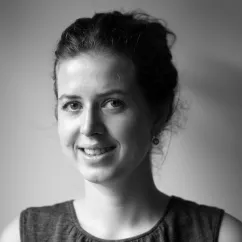What Is Crowdfunding and How Could It Help Financial Inclusion?

Marloes Noppen manages Investor Relations for Symbiotics Netherlands BV. She has five years' experience in impact investing and has a background in advisory for impact investing for both funds and private investors. She is also the Financial Director of Symbiotics Netherlands. Marloes is most interested in the sweet spot where impact and return collide.
FinDev: What is crowdfunding? How does it work, and how would you categorize it - what family of funding does it belong to?
Marloes: Crowdfunding is exactly what it says: funding by a large number of parties. It is intentionally broad. Funding can mean equity investments, debt, pre-purchasing products or donations. The parties can range from retail investors to institutional investors. Crowdfunding allows for a lot of flexibility and is therefore not that easy to fit into a box. Definitely, it would fall into a fintech solution.
FinDev: What does the crowdfunding landscape look like in the inclusive finance sector? How has it evolved? Where is it most used in the world, and for what kinds of projects?
Marloes: Crowdfunding for inclusive finance has in many ways evolved like inclusive finance itself. It started out as a non-profit activity and has become increasingly for-profit and more heavily supervised. Crowdfunding started out with the ability to donate money to microfinance institutions, via marketing stories of the end-client. Non-profit organizations such as Kiva began to offer loans to microfinance institutions with zero percent interest. Other platforms such as France-based Babyloan, began to replicate this model. These days, crowdfunders are mostly regulated and many of them are for-profit. For example, the Europe-based Lendahand and Plumseeds are for-profit crowdfunding platforms operating as investment companies. While Lendahand caters to retail customers, Plumseeds only serves professional institutions.
While in the beginning, many of these platforms were founded in developed markets, we are increasingly seeing crowdfunding platforms popping up in emerging markets. Milaap in India and Mekar in Indonesia are great examples of this. They mostly focus on microfinance and SME finance, but a number of platforms have started incorporating other critical services such as renewable energy and education.
FinDev: What potential do you see for crowdfunding to accelerate financial inclusion? Can crowdfunding really benefit financially excluded or underserved people?
Marloes: Crowdfunding is powerful because, unlike traditional finance, it is a tool that is available to the masses. This broadens the spectrum of investors beyond specialized investors. For years within the sector, we have been talking about taking impact investing – which to a large extent consists of inclusive finance – mainstream. Crowdfunding is a unique tool to do so. Will it really benefit financially excluded or underserved people? This is a question that has been around for a while now. Extremely rigorous research methods have been used to see if microfinance really has an impact, and the results are not conclusive. It would be naïve to claim that crowdfunding – largely financing the same financial institutions – would have a different impact. Many end-clients will see little about how these financial institutions are funding themselves. What we do know is that there is a funding need, and the more capital we manage to mobilize, the smaller the gap.
For the investor the advantage is that he or she can directly select their favorite investment opportunity. It allows the investors to pick and choose specific investments according to their own appetite and values.
Crowdfunding is powerful because, unlike traditional finance, it is a tool that is available to the masses.
FinDev: What successful examples of platforms have you seen that allow retail investors around the world to finance micro, small and medium-sized businesses based in Africa?
Marloes: We see that platforms that are successful have three things:
- They have a consistent deal-flow. On a continuous basis there are new deals presented. These investees have been analyzed rigorously, including for impact.
- The platform is professional and communicates in a transparent manner about the risks.
- The platform has a loyal and committed crowd.
One of such platforms is Energise Africa, which focuses exclusively on renewable energy.
FinDev: What kind of regulatory issues come into play with crowdfunding? For example, How are clients protected – both those on the lending and on the borrowing end? Are the crowdfunding platforms subject to any kind of regulation?
Marloes: We should view online funding platforms as an additional funding stream for financial institutions. Most capital still stems from DFIs and larger institutional investors. Financial institutions are almost without exception regulated as the sector has professionalized. Crowdfunding is undergoing the same trajectory. More and more regulatory bodies are requiring specific licenses to operate crowdfunding platforms. Within the EU, this is most often a MiFID (Markets in Financial Instruments Directive) license for investment companies. Both Lendahand and Plumseeds mentioned earlier operate under that license. That means there are high requirements set on processes and procedures, seeking to protect both the investor and the investee.
FinDev: What are the main constraints and challenges to developing crowdfunding in low-income countries?
Marloes: The main challenge to developing crowdfunding in low-income countries is the maturity of the financial sector itself. Even in mature countries such as the Netherlands, the regulator is not very clear about how to regulate crowdfunding companies. We do see the sector become more and more regulated, but it still remains a reasonably young and small phenomenon. In some low-income countries, capital is difficult to come by and frequently informal. This might not be the most favorable breeding ground for crowdfunding. But that doesn’t mean there aren’t great examples coming from low-income countries. Mekar in Indonesia is just one of them.


